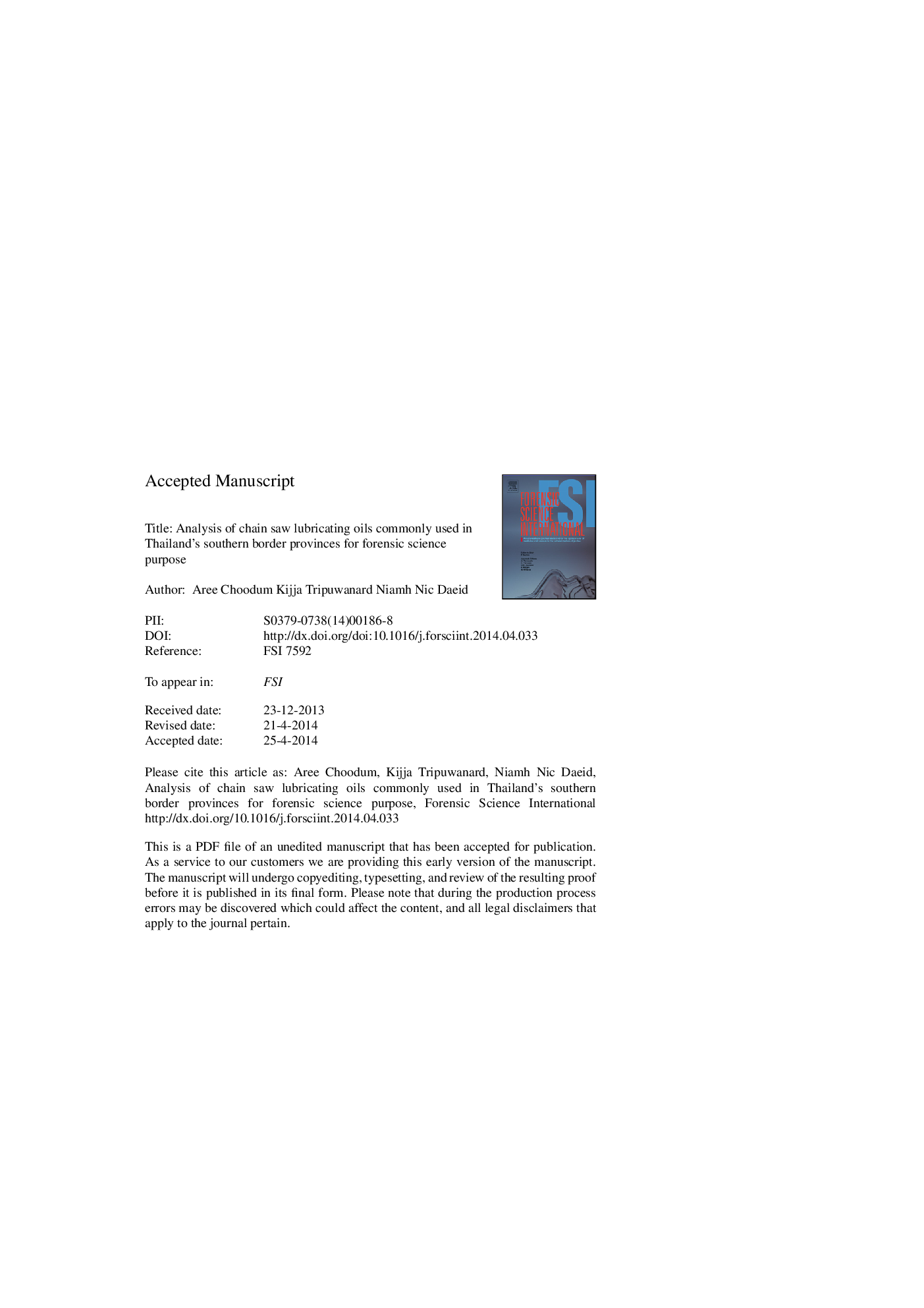| Article ID | Journal | Published Year | Pages | File Type |
|---|---|---|---|---|
| 6552454 | Forensic Science International | 2014 | 26 Pages |
Abstract
In recent years, Thailand's southern border provinces (Malay-Muslim-majority border provinces) have become the scene of violence and insurgency. One of the attack patterns is the blocking of roads with perennial plants followed by planned attacks using improvised explosive devices (IEDs) or weapons on first responders. Containers of viscous dark lubricating oil and traces of lubricants on the felled trees were usually found at the scene. These were suspected to be chain oil lubricant from the chainsaws used to cut down the trees used for the roadblock. This work aimed to differentiate the chromatographic patterns of used lubricating oils available in automobile repair shops from various locations across Thailand's southern border provinces. Lubricating oils were analyzed using gas chromatography/flame ionization detector (GC/FID) every two weeks to study their variation in chemical compositions over time. The results obtained from GC/FID were normalized for differentiation. This included four two-stroke, six four-stroke, and three recycled oils. Two lubricating oils found at an incident scene were also analyzed and the results compared with the chain oil from five seized chainsaws.
Keywords
Related Topics
Physical Sciences and Engineering
Chemistry
Analytical Chemistry
Authors
Aree Choodum, Kijja Tripuwanard, Niamh Nic Daeid,
